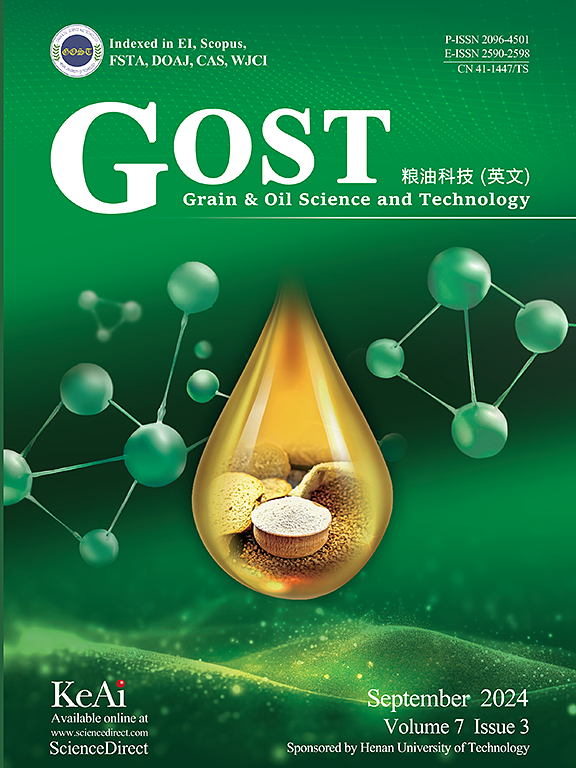Chickpea (Cicer arietinum Linn.) starch: Extraction, composition, structure, properties, modifications and food applications
Q2 Agricultural and Biological Sciences
引用次数: 0
Abstract
Chickpea (Cicer arietinum Linn.) is a widely cultivated edible legume worldwide. Starch is the major carbohydrate in chickpea seeds and amounts up to 50% of the dry matter. Compared with other legume starches and cereal starches, there is a lack of systematic review on chickpea starch. Herein, this review summarized the extraction, composition, structure, properties, modification and food uses of chickpea starch. Literatures showed that chickpea starch exhibited unique molecular structures and functional properties differed from other starches from legumes, cereal and tubers. Moreover, chickpea starch has been found to have remarkable resistance to digestion. The chickpea resistant starch showed prebiotic effect and potential health benefits. To date, chickpea starch has been modified by physical, chemical, biological and dual modification methods to change its functional properties such as swelling power, solubility, thermal, pasting, gel textural properties, and digestibility, which are essential to widen its applications. In food sectors, chickpea starch could be used as fillings, thickeners, gelling agents or a source of resistant starch in various formulated foods. In the end, suggestions on how to deeply understand and exploit chickpea starch are proposed.

鹰嘴豆(Cicer arietinum Linn.)淀粉:提取、组成、结构、性质、改性及食品应用
鹰嘴豆(Cicer arietinum Linn.)是世界范围内广泛种植的食用豆科植物。淀粉是鹰嘴豆种子中主要的碳水化合物,占干物质的50%。与其他豆类淀粉和谷类淀粉相比,鹰嘴豆淀粉缺乏系统的综述。本文综述了鹰嘴豆淀粉的提取、组成、结构、性质、改性及食品用途。文献表明,鹰嘴豆淀粉具有不同于其他豆科、谷类和块茎类淀粉的独特分子结构和功能特性。此外,人们发现鹰嘴豆淀粉具有显著的抗消化能力。鹰嘴豆抗性淀粉显示出益生元效应和潜在的健康益处。目前,鹰嘴豆淀粉已通过物理、化学、生物和双重改性等方法进行了改性,以改变其膨胀性、溶解度、热性、糊化性、凝胶性和消化性等功能特性,为扩大鹰嘴豆淀粉的应用范围奠定了基础。在食品领域,鹰嘴豆淀粉可用作馅料、增稠剂、胶凝剂或各种配方食品中抗性淀粉的来源。最后,对如何深入认识和开发鹰嘴豆淀粉提出了建议。
本文章由计算机程序翻译,如有差异,请以英文原文为准。
求助全文
约1分钟内获得全文
求助全文
来源期刊

Grain Oil Science and Technology
Food Science
CiteScore
7.30
自引率
0.00%
发文量
69
审稿时长
12 weeks
期刊介绍:
 求助内容:
求助内容: 应助结果提醒方式:
应助结果提醒方式:


